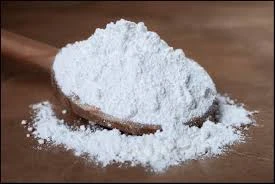
cyanide used in gold
Cyanide Used in Gold Mining An In-Depth Analysis
Cyanide, a toxic chemical compound, has been utilized in gold mining for over a century, playing a pivotal role in the extraction and processing of gold from ore. Its effectiveness in separating gold from other minerals makes it a popular choice, but it has also raised significant environmental and health concerns. This article will explore the history, application, advantages, disadvantages, and ongoing debates surrounding the use of cyanide in gold mining.
History of Cyanide Use in Gold Extraction
The use of cyanide in gold mining dates back to the late 19th century when it was first introduced in the goldfields of the American West. The cyanidation process, patented in 1887 by the Scottish chemists John S. MacArthur, Robert W. H. Forrest, and William Forrest, revolutionized gold extraction by allowing miners to recover up to 95% of the gold present in ore. This high efficiency was a significant improvement over earlier methods, such as amalgamation with mercury, which was less effective and more environmentally damaging.
How Cyanide Works in Gold Mining
Cyanide works by forming a cyanide complex with gold. When gold ore is crushed and treated with a dilute cyanide solution, the gold dissolves into the solution, forming a gold-cyanide complex. This process allows for the separation of gold from the surrounding materials. After the extraction, the gold can be recovered from the solution through various methods, including carbon adsorption, electrolysis, or precipitation.
Advantages of Using Cyanide
One of the primary advantages of cyanide use in gold mining is its efficiency. Not only does it maximize gold recovery rates, but it also takes less time and energy compared to other extraction methods. The cyanidation process is particularly effective for low-grade ores, which have become increasingly prevalent as high-grade deposits are depleted.
Additionally, cyanide is relatively inexpensive compared to other chemical agents used in mining. This cost-effectiveness has encouraged its widespread use in large-scale mining operations. Furthermore, advancements in technology have improved the ability to manage and mitigate the environmental risks associated with cyanide use.
cyanide used in gold

Disadvantages and Environmental Concerns
Despite its advantages, the use of cyanide in gold mining poses significant environmental and health risks. Cyanide is highly toxic, and even small amounts can be lethal to humans and wildlife. Accidental spills or leaks from mining operations can contaminate nearby soil and water sources, leading to devastating ecological consequences.
Several high-profile incidents have highlighted these dangers. One of the most notable was the Baia Mare cyanide spill in Romania in 2000, which resulted in the contamination of the Somes River and had a catastrophic impact on the local ecosystem. Such events have sparked public outrage and calls for stricter regulations on cyanide use in mining.
The potential for human exposure to cyanide also raises serious health concerns. Workers involved in cyanide handling can be at risk if safety protocols are not rigorously followed. Chronic exposure has been linked to a range of health issues, prompting mining companies to implement comprehensive training and safety measures.
Current Trends and Future Considerations
In response to the environmental and health concerns, the mining industry is increasingly exploring alternatives to cyanide. Research into eco-friendly extraction methods, such as the use of thiosulfate, has shown promise as potential substitutes for cyanide in gold recovery processes. Furthermore, the adoption of more stringent regulations in various countries aims to ensure safer practices in mining operations.
Despite the controversies surrounding cyanide use, it remains a cornerstone of gold mining worldwide. The industry is at a crossroads, where balancing economic viability with environmental responsibility is crucial. Innovations in mining technology and a commitment to sustainability may pave the way for safer practices while ensuring gold extraction remains efficient and effective.
Conclusion
Cyanide has undeniably revolutionized gold mining, allowing for higher recovery rates and lower operational costs. However, the associated environmental and health risks cannot be ignored. The dialogue surrounding cyanide in mining is complex, encompassing economic, ecological, and societal considerations. As the industry evolves, ongoing research and development of alternative methods will be essential to mitigate risks while continuing to meet the global demand for gold. The future of gold mining may depend on achieving this delicate balance, ensuring that both humans and the planet can thrive in the wake of this valuable resource.
-
Sodium Dichloroisocyanurate Safety Handling ProtocolsNewsJul.29,2025
-
Mining Chemicals for Copper Extraction Processes GuideNewsJul.29,2025
-
Fertilizer for Sale Shipping and Storage TipsNewsJul.29,2025
-
Dimethyl Disulfide as Sulfurizing AgentNewsJul.29,2025
-
Benzotriazole Safety Data Handling and Storage GuidelinesNewsJul.29,2025
-
Ammonium Bicarbonate Safety Handling Storage GuidelinesNewsJul.29,2025
-
The Transformative Role Of Trichloroisocyanuric Acid in Water TreatmentNewsJul.23,2025
Hebei Tenger Chemical Technology Co., Ltd. focuses on the chemical industry and is committed to the export service of chemical raw materials.
-

view more DiethanolisopropanolamineIn the ever-growing field of chemical solutions, diethanolisopropanolamine (DEIPA) stands out as a versatile and important compound. Due to its unique chemical structure and properties, DEIPA is of interest to various industries including construction, personal care, and agriculture. -

view more TriisopropanolamineTriisopropanolamine (TIPA) alkanol amine substance, is a kind of alcohol amine compound with amino and alcohol hydroxyl, and because of its molecules contains both amino and hydroxyl. -

view more Tetramethyl Thiuram DisulfideTetramethyl thiuram disulfide, also known as TMTD, is a white to light-yellow powder with a distinct sulfur-like odor. It is soluble in organic solvents such as benzene, acetone, and ethyl acetate, making it highly versatile for use in different formulations. TMTD is known for its excellent vulcanization acceleration properties, which makes it a key ingredient in the production of rubber products. Additionally, it acts as an effective fungicide and bactericide, making it valuable in agricultural applications. Its high purity and stability ensure consistent performance, making it a preferred choice for manufacturers across various industries.











